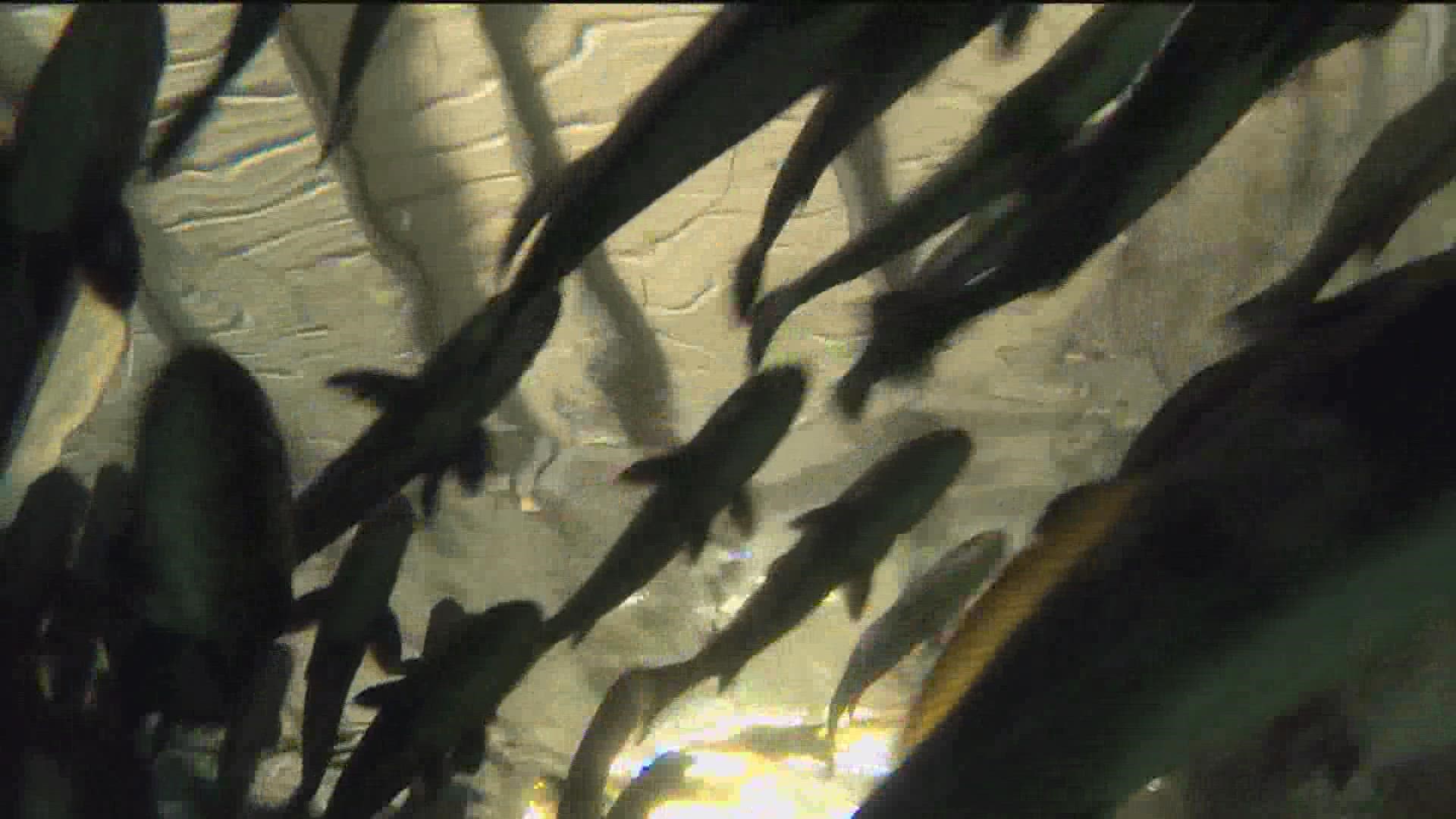SAN DIEGO — The White Seabass replenishment program being conducted by Hubbs-SeaWorld Research Institute has been considered a success. But now after the release of a four year study, it appears the program is doing much better that they originally thought.
"Since 1990 we've been tagging all the fish with a small coded wire tag. We raise the fish from a hatchery, we tag the fish, release the fish and part of our research is to understand how many are surviving in the wild," said Mark Drawbridge, a senior research scientist at Hubbs-SeaWorld Research Institute.
Collecting the carcass of White Seabass after they had been caught and scanning them for the wire tag was the only way to track the fish. Then four years ago, Hubbs connected with the South Carolina Department of Natural Resources and the College of Charleston and began tracing the genetic fingerprint of the fish.
"We fortunately had samples dating back to 1985. We gave them samples from 700 fish, we knew we how many were tagged and it was 7%," said Ellen Rieber who was the graduate student that did the research.
The other part needed was White Seabass, these were younger fish collected by Hubbs, but the genetic fingerprint was much higher.
"46% had a hatchery signature, jaw dropping really," said Rieber.
They also sent 50 adult fish.
"Of those 30% had a hatchery signature, none of them scanned with a wire tag," continued Rieber.
By using genetics Hubbs gets a more accurate number of the wild stock of White Seabass
"When they say it's a hatchery fish from our hatchery they say that with a 99.999% confidence," said Rieber.
With the study showing the hard work Hubbs is doing is paying off with the White Seabass replenishment program they hope to apply this to other species like the California Halibut.
Watch Related: San Diego research institute growing White Seabass population off California coast (Mar 7, 2022)

